Natural Home Remedies for Leg Pain
By Dr Smita Barode +2 more

Get,

to manage your symptom
Get your,


4 Cr+ families
benefitted

OTP sent to 9988776655



You’ve successfully subscribed to receive
doctor-approved tips on
Whatsapp

Get ready to feel your best.

Hi There,
Download the PharmEasy App now!!


Register to Avail the Offer
Send OTPBy continuing, you agree with our Privacy Policy and Terms and Conditions

Hi There,
Sign up on PharmEasy now!!
Trusted by 4 crore+ families

OTP sent to 9988776655



You have unlocked 25% off on medicines




Code: NU25
By Dr Smita Barode +2 more
Table of Contents
We commonly hear our beloved elders, be it our grandparents or parents, complain about leg pain. It is not only the elderly who experience this pain; youth can also experience it. Leg pain can be the result of a strenuous exercise routine, overuse of legs, decreased water intake causing dehydration, or due to underlying medical conditions like varicose veins, peripheral nerve damage due to diseases like diabetes, etc., and other such causes. The severity of pain varies with the cause, from moderate to severe, and it can either be continuous or can be sometimes intermittent. Sometimes, the pain comes and goes away quickly (acute) or can last for weeks, months, or even years (chronic)2.
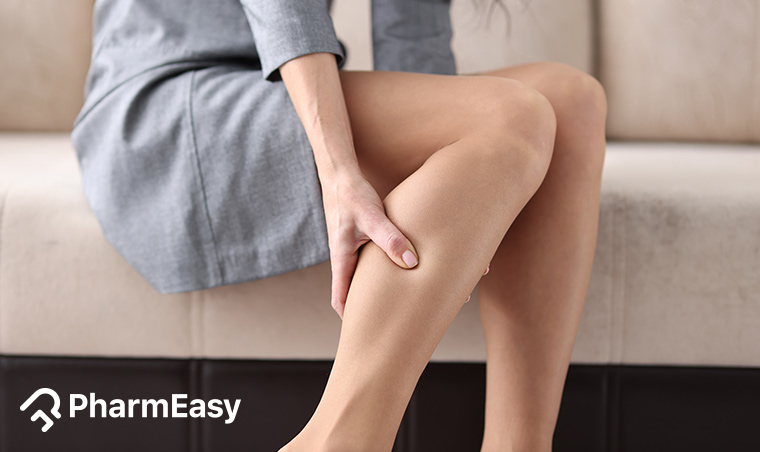
As the causes of leg pain can be wide-ranging, a few categories are listed below:
Over-staining of muscles by excessive exercise and little rest, dehydration and medications (e.g., statins and diuretics)1.
Muscle strain (due to over-stretching of muscle); pain in the front of the leg due to over-use (shin splints); hairline fracture or crack of the bone (stress fractures), and inflammation in tendons of the legs (tendinitis)1.
Deep vein thrombosis (blood clot); nerve damage (seen in people with diabetes, alcoholism, and people who smoke); varicose veins; diseases in which inflammation is seen like arthritis (joint inflammation), cellulitis (soft tissue and skin infection), gout (a form of arthritis) and peripheral artery disease (improper circulation of blood due to narrowing of blood vessels)1.
Sciatica (pain that radiates to the lower leg due to a slipped disc in the back); bone cancer (Ewing sarcoma, osteosarcoma); cancerous tumours of the bone, etc1.
The symptoms of leg pain are:
Some of the other signs that might appear along with leg pain are:
No matter how, what, or why, pain is pain, and what we ultimately want is relief from it. Home remedies are natural products that are found at home, and some of them can be used to relieve leg pain. A few Ayurvedic herbs can also help with leg pain, which are described as follows.

Apple cider vinegar is a commonly used seasoning. It also has therapeutic properties; therefore, it has been used for its medicinal purposes for ages as well. In a study3, it was found that the external application of apple cider vinegar in people with varicosities (also called varicose veins, a common cause of leg pain) leads to a reduction in pain. You can use apple cider vinegar to apply directly onto the leg, or you can mix a little bit of it in water and drink it. You can also add a few drops of apple cider vinegar to a water bath and soak your legs in it.
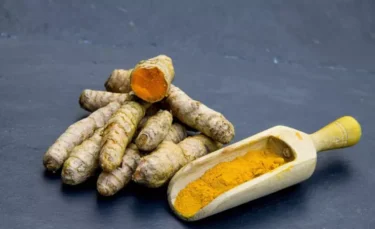
Research4 has shown that turmeric alleviates inflammation (due to its anti-inflammatory properties) and can be used as a medicine for relieving arthritic pain, which is one of the reasons for leg pain. Turmeric is useful for osteoarthritis, which causes pain in the leg, among many other conditions. Thus, turmeric explains its use as a remedy for leg pain. You can make use of it by including it in your diet and consuming it, or by making a semi-solid paste of it and applying it over the leg.
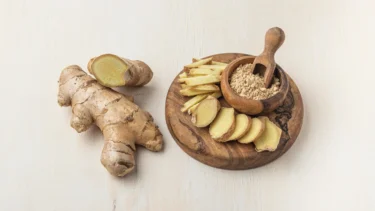
There have been various reports and studies claiming the use of ginger extracts in the management of inflammation caused by osteoarthritis, arthritis, and rheumatism. In a stud5y, it was also found that it helps relieve pain due to general muscular discomfort when consumed as a dietary supplement. Though the exact way in which it acts is still unknown and unclear, a few studies5 have shown that ginger effectively helps reduce pain and swelling due to its anti-inflammatory activity. Therefore, it is used to relieve leg pain. It can be used as an oil and can be applied over the leg, or it can be consumed directly.

A study6 was devised in order to understand the tribal formulations that have been used for pain relief. In this study, researchers noticed that many of the formulations contained Calotropis gigantea, commonly called Dudh akondo, and most of these were used for rheumatic pain. Calotropis gigantea is usually mixed with other herbs and used for application onto the leg in the form of a paste.

Lavender oil is an essential oil and has been found to have a variety of beneficial effects on our health. It is used to help relieve sudden, short-term pain and also long-term pain and pain of unknown origin. In a study, it was found that massaging the feet of patients with lavender oil admitted to the intensive care unit (ICU) can have various beneficial effects, including the reduction of pain7. Thus, it can also be used to help relieve leg pain. You can also use lavender oil to massage your feet by diluting it in another oil.
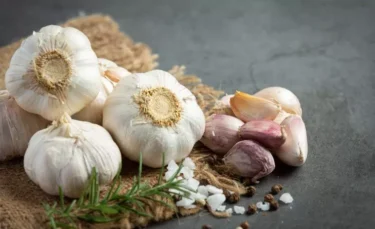
Garlic consists of a bioactive compound called allicin, among others, which is mainly responsible for the medicinal properties of garlic. A few studies8 conducted showed a decrease in joint pain after the consumption of garlic. This alleviation of pain may be due to its anti-inflammatory activity. Joint pain can be the reason for leg pain; thus, garlic can be used to help manage leg pain. You can use garlic for leg pain by crushing it and consuming it directly or by crushing it, mixing it in an oil of your choice, and applying it.
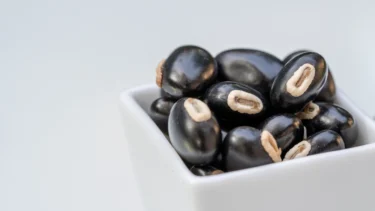
It is a herb used in Ayurvedic medicine. It is commonly known as cowhage or cow-itch in English and Kaunch or Aalukusi in Hindi. It is mainly used in the management of Parkinson’s disease and other nerve-related problems9. In Ayurveda, it is also used to deal with sciatica (pain in the legs caused due to nerves getting trapped between vertebral discs). A bit of its root powder is mixed with water, boiled, and reduced. This decoction is filtered and used for consumption to help relieve leg pain due to sciatica10.

It is an abbreviation for Rest, Ice, Compression, Elevation, and Referral. This method is effective in helping reduce sudden leg pain due to an injury. Simply put, it means to rest the leg; put ice on it by using an ice pack or frozen peas; compress the area by applying a firm bandage; keep the leg raised above the hip for some time, and refer to a doctor as soon as possible2.
Also Read: How to Clear a Stuffy Nose with Home Remedies
It is necessary to seek medical help under the following circumstances:
Also Read: Natural Home Remedies for Swollen Legs
No matter what your age is, leg pain can be very uncomfortable. A variety of reasons can cause this pain, such as over-straining the muscles of the leg, injury, and underlying medical conditions. It can occur for a short time or longer, and it can be less severe or more severe. What really matters is the solution to this pain. A few home remedies like turmeric, ginger, lavender oil, etc., can be helpful in relieving leg pain. You can try a few or all of the remedies that we have mentioned and see what suits you the best. If you notice anything unusual, like swelling, redness, fever, etc., kindly seek medical help at the earliest.
Also Read: Natural Home Remedies for Ear Pain
Yes, you might experience leg pain when you injure yourself, do not drink enough water, exercise for too long, and also if you strain a muscle (due to over-stretching), etc1.
Even though it is rare, there are chances for leg pain to be caused due to cancer of the bones (Ewing sarcoma, osteosarcoma)1. However, a more appropriate diagnosis can be made by your doctor. So, consult your doctor to be absolutely sure.
Yes, diabetes causes damage to the nerves, which might lead to leg pain1.
Yes, essential oils, especially lavender oil, have pain-relieving activity and can be used for leg pain7.
No, there have been no reports documented regarding the association of leg pain with memory loss.
Disclaimer: The information provided here is for educational/awareness purposes only and is not intended to be a substitute for medical treatment by a healthcare professional and should not be relied upon to diagnose or treat any medical condition. The reader should consult a registered medical practitioner to determine the appropriateness of the information before consuming any medication. PharmEasy does not provide any guarantee or warranty (express or implied) regarding the accuracy, adequacy, completeness, legality, reliability or usefulness of the information; and disclaims any liability arising thereof.
Comments

Leave your comment...
You may also like
Comments